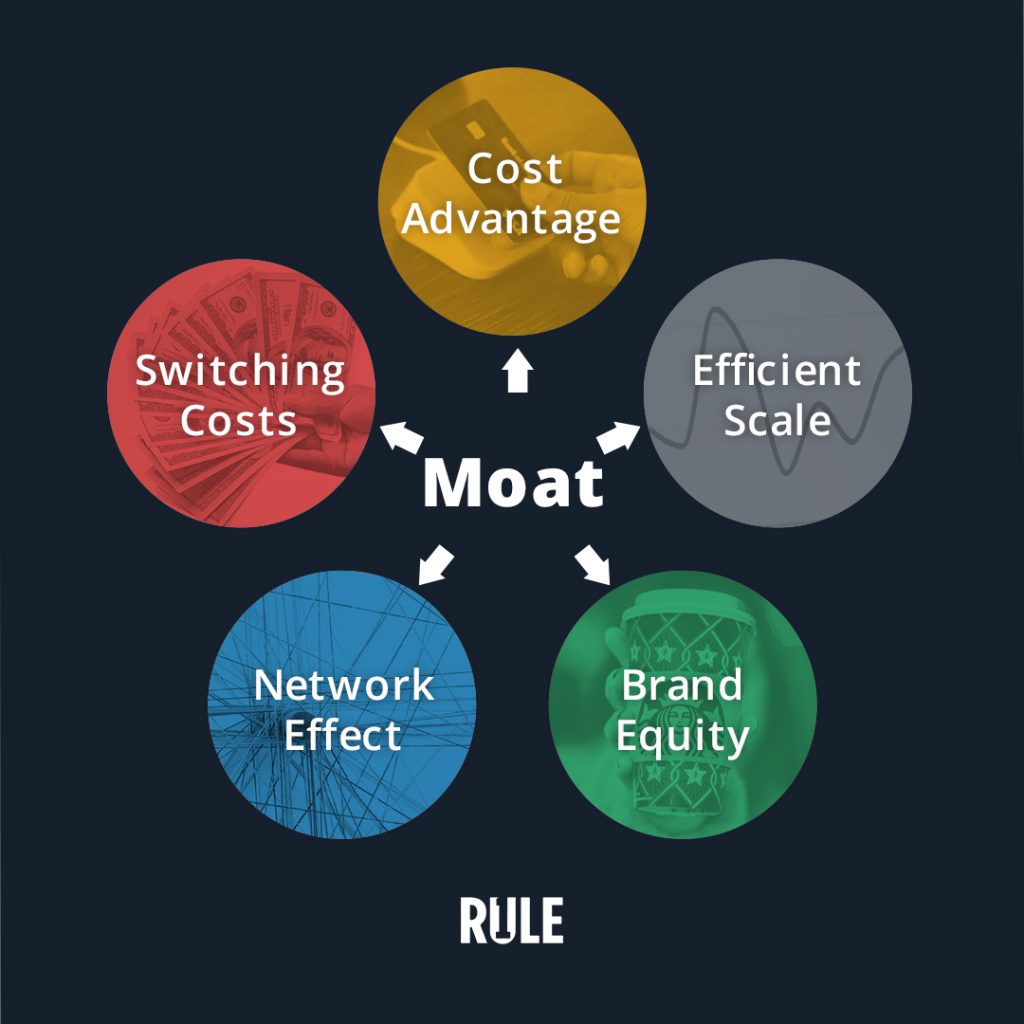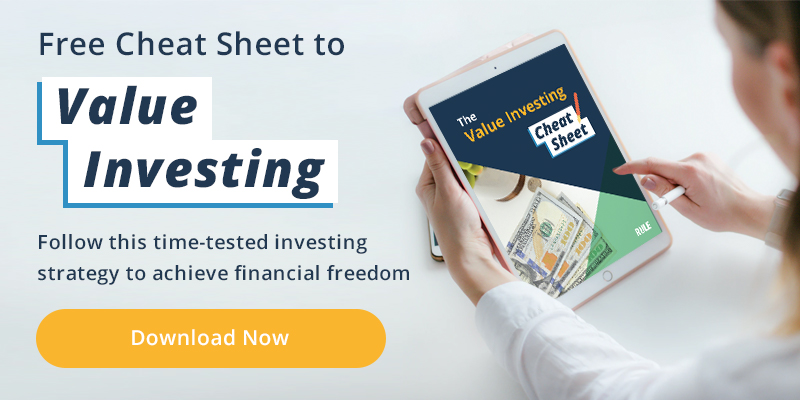With the way things have been going (rising inflation, uncertainty around interest rates, an ongoing global pandemic, etc.), the stock market has been on a crazy rise— and we may have an interesting 2022.
As you begin to look at the year ahead and wonder how you should invest given everything going on, you may be considering other types of investments.
Or maybe, you’re just starting out and wondering what to invest in as a beginner and what to avoid.
Wherever you’re at in your investing journey, the fact that you’re reading this means you’re already taking steps to make smart investment choices in the new year.
It’s my goal to help you make more money through investing, not lose money — that’s Rule #1 of investing, which is why I recommend all Rule #1 investors avoid high risk investments.
There are many types of high-risk investments that I’ll cover below, but it’s important to know that these risky investments are often extremely enticing. So you’ll need to be diligent to make sure you avoid them.
Free Cheat Sheet to Value Investing
Achieve financial freedom with this time-tested investing strategy
Risk vs. Return
High-risk investments are often associated with high rewards. This is the only reason people partake in these types of investments. If you hit your luck just right, you stand to make a big return on your money, but you stand a greater chance of losing a big chunk (or all) of your money.
This is gambling, not investing.
Low-risk investments are often associated with low rewards, which makes them much less enticing. Examples of low-risk investments often include bonds, CDs, and mutual funds.
While these types of investments are generally considered “safe,” they usually barely can hedge for inflation. Without a substantial return, you could be losing out on a huge amount of money that would benefit you during your retirement years.
With any type of investing, there is always some level of risk. None of us can predict which way the market will turn, but there are steps you can take to dramatically reduce your risk and achieve substantial returns.
I’ll get to how you can build wealth through low-risk, high-return investments later, but if you want to make sure you have something to invest in the first place, stay away from these high-risk investments this year…

What is a High-Risk Investment?
A high-risk investment is characterized by a greater potential for loss. If you stand to lose a large portion of your initial investment or, in my opinion, any of it, that investment is high-risk.
Many people say stocks are high-risk investments, but this is a broad generalization. Stocks can be one of the smartest investments if you know what you’re investing in. However, there are plenty of ways to invest in stocks that aren’t smart.
Types of High-Risk Investments
Here are some examples of high-risk investments that get people into trouble:
Investing in Companies You Don’t Understand
One of the biggest investing mistakes people make is investing in companies they don’t understand. You probably see this all of the time and may even be guilty of doing it yourself.
You read a positive article about a business, hear their founder talk on a podcast, or love their product, so you decide to buy the company’s stock.
But do you really understand how that company works or know if they’re making a profit?
Another example of this is using a robo-advisor. When a robo-advisor makes investment decisions for you, you have no idea what or why they’re making those choices.
As enticing as it may be to have a bot do the work of picking your stocks for you, all it’s doing is spreading your investment out amongst hundreds (if not thousands) of companies to try and mitigate the risk of losing money. With this strategy, you can expect meager returns.
You can’t begin to invest properly without first understanding the businesses you’re investing in. If you do, you’re investing based on speculation and putting your money at risk.
Overvalued Companies
Another all-too-common mistake and one of the main types of high-risk investments is purchasing companies at a price that exceeds their value.
This is one of the foundational principles of Rule #1 investing and all value-based investing strategies: buy stocks when they’re on sale or priced lower than their intrinsic value.
Right now, tech companies are some of the most overvalued stocks on the market. If you’re considering investing in tech, think twice, not only because they’re currently priced sky-high but also for these other reasons.
Everything you need to know about finding and buying stock on sales Free Cheat Sheet to Value Investing
Companies with Bad Management
A company is only as good as its management!
Whether its leaders are inexperienced, take on a lot of debt, buy back stock at record high prices, or make a slew of other poor decisions, a company with bad management is a risky investment.
Great management, on the other hand, such as a CEO with a track record of success and sound ethics, is one of the key components of a smart investment.
Businesses Without a Durable Advantage
We don’t know where the market is headed, so any company you invest in during 2022 should be able to withstand a market correction or recession. A substantial moat or advantage that protects them from the competition is a critical component of this.

A company with an impenetrable brand, patented products or services, location dominance, or control over market pricing will be much more likely to survive a market crash or an industry-specific event.
Another type of investment that falls under this category is a leveraged Exchange Traded Fund (ETF). When you purchase an ETF vs an individual stock, you’re betting on the average stock price of the entire index or industry, so you’re not benefiting from the potential returns of investing in the great companies that significantly outperform their competitors.
Some people increase their risk even more by investing in leveraged ETFs, which aim to double or triple the returns of a stock market index but can also double or triple your losses.
Investing in the Next Big Thing
Another almost sure way to nearly lose all your money is by investing in the “next big thing.”
It’s imperative to not let the hype around a certain company or stock sway you when investing. I made this mistake back in the 90s when I invested in NeXt Computers — a high-profile tech company that was supposed to be “the next big thing.” But I learned my lesson.
A few common examples of this today are cryptocurrencies, IPOs (Initial Public Offerings), and meme stocks. IPOs are often far too new to fully understand and hardly ever live up to the hype surrounding them going public, and meme stocks are driven high or low simply based on social media influence.
But cryptocurrencies are the most notable example of this type of high-risk investment. Crypto is certainly poised to be “the next big thing,” which should make the savvy investor wary. Given their incredible volatility, your investment could gain or lose 50% in a day, making it extremely high-risk.
Rule #1 Investors learn how to manage their emotions and make sound decisions based on facts, not fanfare.
Investing for the Short Term
Another thing every Ruler learns to do is invest for the long-term. This is because the invisible hand dictates that the market always prices companies at their true value, given adequate time.
However, in the short term, the prices of stocks are largely influenced by the whims of investors, which makes investing for the short-term inherently risky.
A common short-term investing tactic is day trading, which is buying and selling the same stock over the course of a day to hopefully make money off of price fluctuations. This is essentially gambling.
Another short-term tactic is trading options. While buying options can be a good investing strategy, it is more complex and shouldn’t be attempted by the novice investor.
If, however, you know how options work and how to apply Rule #1 investing strategy to purchasing puts or calls, you can use this short-term strategy in a low-risk way.
Investing in Cheap Stocks
What’s more enticing than investing in a stock for mere pennies that one day could be worth thousands? This is a trap that many investors fall into. But just because you can buy penny stocks at a good price doesn’t mean you should…
As Rule #1 investors, we always want to buy stocks when they’re “on sale,” but that isn’t the same thing as “cheap.”
“On sale” stocks are priced lower than their intrinsic value. Whereas penny stocks are cheap because they’re not worth very much in the first place. It’s crucial to understand what a company is worth before investing in it if you want to reduce your risk.
What are Low-Risk Investments?
There are a lot of strategies out there that are built off of minimizing risks. But, as I mentioned at the start, with a lot of low-risk strategies, you can expect low returns.

If you’re looking for low-risk, high-return investments, you need to learn to invest the Rule #1 way.
This means following the principles of value investing, many of which I’ve discussed above, and sticking to the 4Ms: a company you understand that has meaning to you, with great management, with a solid moat, and priced with a margin of safety. When you do this, you can dramatically minimize your risk and maximize your return.
To learn how to invest and build a successful investment portfolio in 2022, grab my Value Investing Cheat Sheet to help grow your wealth the right way.

Phil Town is an investment advisor, hedge fund manager, 3x NY Times Best-Selling Author, ex-Grand Canyon river guide, and former Lieutenant in the US Army Special Forces. He and his wife, Melissa, share a passion for horses, polo, and eventing. Phil’s goal is to help you learn how to invest and achieve financial independence.